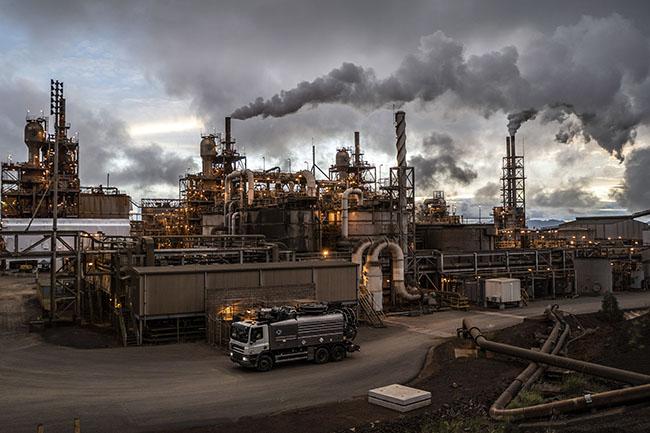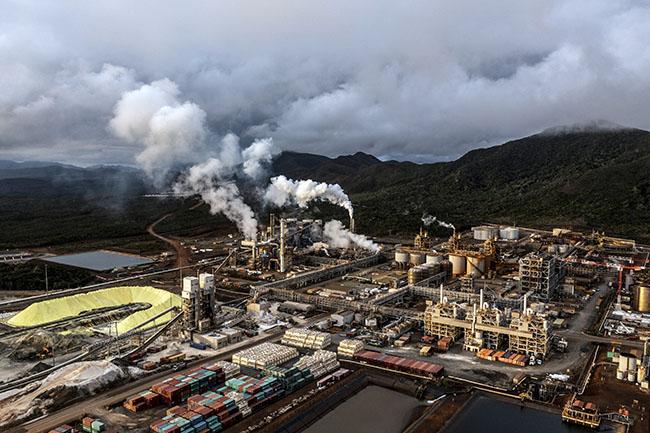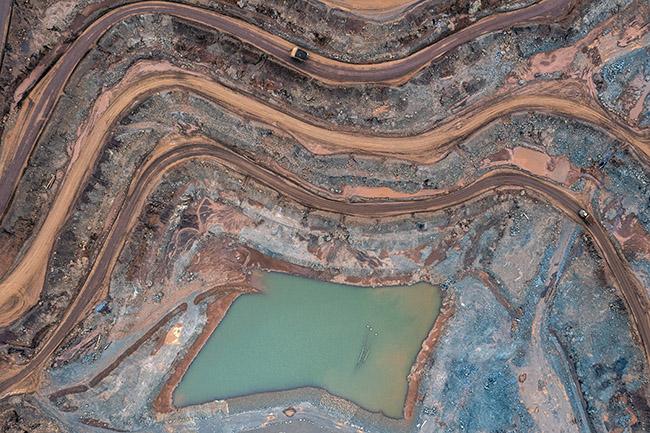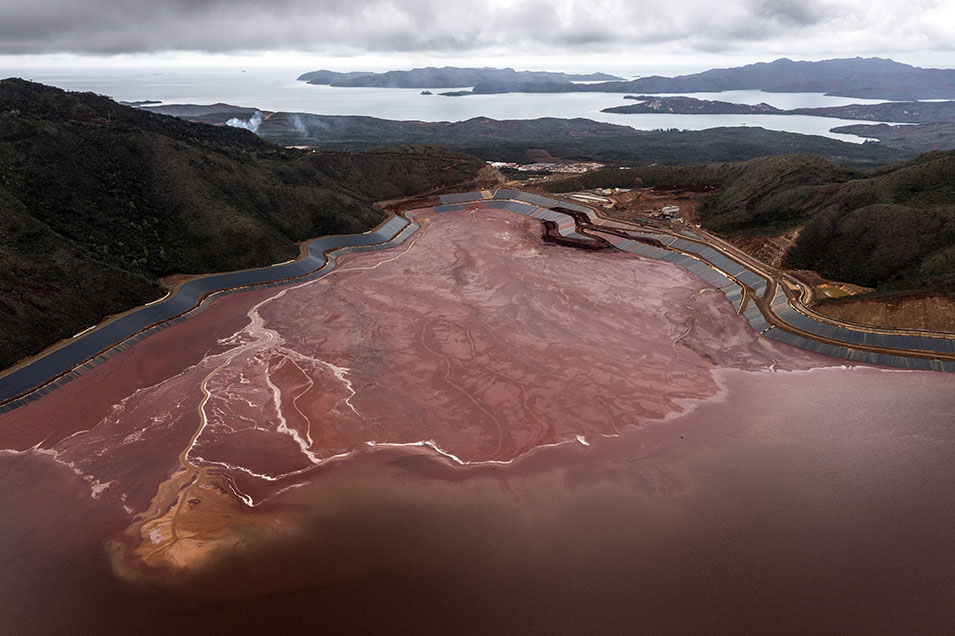
New York Times reporting by Hannah Beech
From the reef-fringed coast of New Caledonia, the Coral Sea stretches into the South Pacific. Slender native pines punctuate the shoreline. The landscape, one of the most biodiverse on the planet, is astonishingly beautiful until the crest of a hill where a different vista unfolds: a gouged red earth pierced by belching smokestacks and giant trucks rumbling across the lunarlike terrain.
This is Goro, the largest nickel mine on a tiny French territory suspended between Australia and Fiji that may hold up to one-quarter of the world’s nickel reserves. It also poses a critical test for Tesla, the world’s largest electric vehicle maker, which wants to take control of its supply chain and ensure that the minerals used for its car batteries are mined in an environmentally and socially responsible fashion.
Tesla’s strategy, the largest effort by a Western electric vehicle maker to directly source minerals, could serve as a model for a green industry confronting an uncomfortable paradox. While consumers are attracted to electric vehicles for their clean reputation, the process of harvesting essential ingredients like nickel is dirty, destructive and often politically fraught.
Because of its nickel industry, New Caledonia is one of the world’s largest carbon emitters per capita. And mining, which began soon after New Caledonia was colonized in 1853, is intimately linked to the exploitation of its Indigenous Kanak people. The legacy of more than a century of stolen land and crushed traditions has left Goro’s nickel output at the mercy of frequent labor strikes and political protests.
If done right, the approach by Tesla, which has the capacity to churn out close to 1 million cars a year, could lead the way in setting global standards for the electric vehicle revolution, in yet another convention-defying move by the company’s enigmatic founder, Elon Musk. It also provides Western car companies a path to begin sidestepping China, which currently dominates the production of electric vehicle batteries.
If done wrong, Goro will serve as a cautionary tale of how difficult it is to achieve true sustainability. Meeting such an ideal will require not just cash and innovation but also savvy about one of the most remote places on earth, a scattering of French-ruled islands hovering on the cusp of independence. Some of the world’s biggest nickel miners have tried to profit at Goro — and failed.
“We’re this tiny little thing in a complicated jurisdiction,” said Antonin Beurrier, the CEO of Prony Resources, the consortium that took ownership of the Goro nickel facility this year. “And we have to reinvent the business.”
Musk has insisted, unlike any other major U.S. automaker, on buying a large share of the major metals he needs for car batteries directly from mines around the world — a strategy to ensure that he has all that he needs as vehicle production increases and a global competition for these materials intensifies. A Tesla manager who used to work at the Goro facility helped shepherd his plan, with the company securing a deal in October to directly purchase up to one-third of Goro’s nickel over the next five years.
In a sustainability report, Tesla said all the right things. By working directly with a mine, rather than buying nickel from a middleman, the company could “address sustainability issues such as biodiversity impact, energy consumption, human rights and tailings management.”
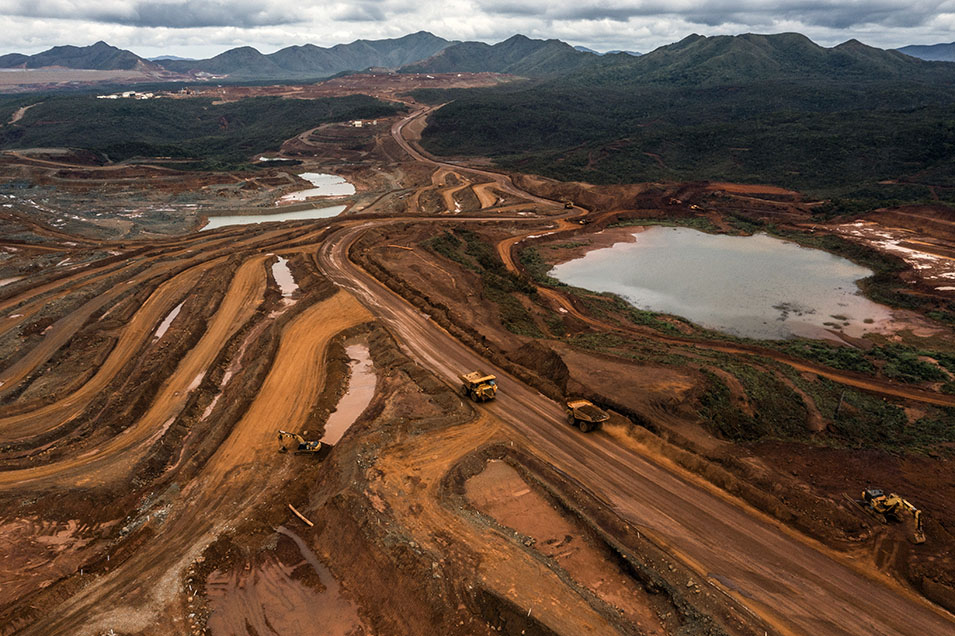
Tesla still depends on metals from mines in other countries dogged by allegations of environmental and human rights abuses. And as the world shifts from fossil fuels to renewable energies, the race to lock up access to these minerals has left companies scrambling. Earlier this year, Musk wrote on Twitter that his company’s “biggest concern” for expanding battery production was ensuring an adequate nickel supply. (Nickel is used to cram more energy into batteries.)
If any place can pull off the feat of green nickel, it is New Caledonia. Because of its status as a French overseas territory, New Caledonia, with a population of 270,000 people, is bound by rigorous European environmental and labor standards. Its own government — led by a coalition representing Indigenous Kanaks, generations of European settlers and newer French arrivals, as well as Asians and Pacific Islanders who came to work the mines — is also eager to protect local rights.
Other major nickel producers, like Indonesia and the Philippines, have loose regulations and even looser oversight. They can produce nickel far more cheaply than New Caledonia can. To compete against these low-cost rivals, New Caledonia is now positioning itself as a supplier of top-grade nickel for rechargeable batteries rather than the cheaper product used for stainless steel.
“New Caledonia, in its way of exploiting its ore, is perceived as a country which contributes to the fight against global warming,” the territory’s president, Louis Mapou, said in an interview. “We have very high production costs in New Caledonia, it is true, but we respect human rights, respect the rights of local people and respect the environment.”
Even with guardrails in place, natural resource extraction remains a sensitive issue in New Caledonia. Nickel prices are up by about 25% this year, reflecting the mineral’s importance in the campaign to move away from fossil fuels. But so far, that has not led to greater profits for miners.
Goro’s previous owner, the Brazilian mining giant Vale, was desperate to rid itself of the mine. Tensions over who would buy the nickel-processing plant led to protests that forced Goro to shut for months, the kind of supply chain disruption that could be disastrous for Tesla. The conflict also triggered the fall of New Caledonia’s government earlier this year.
“In the history of nickel in New Caledonia, a battle exists between the multinational and the local populations, and there is also the colonial history,” said Mapou, who took power after the Goro conflict and is the territory’s first Kanak president. “With Tesla, with the new ownership, we have a compromise now that makes it possible to open the Goro plant, but it remains fragile.”
Battle Lines
The coastal road to Goro, meandering past a bay studded with colorful coral, is littered with charred cars from the months long struggle that idled the mine and led to the collapse of New Caledonia’s government in February. And they are a visceral reminder of the tense politics that could stymie Tesla’s efforts to secure a steady supply of nickel.
André Vama was one of hundreds of Kanaks who barricaded the road with burning tires and vehicles this year, strangling the mine’s operations.
“From the start, we have been against this mine,” said Vama, who is a leader of a local environmental alliance. “This is our national patrimony, our assets, and the Kanaks, who are victims of history, are not in control of what should be ours.”
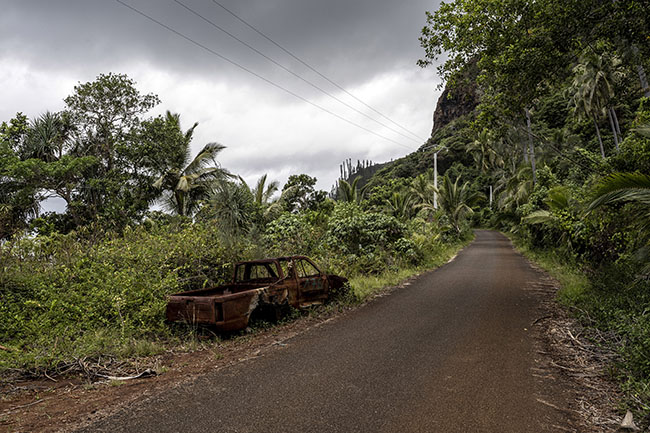
Local opposition to the mine draws both from political concerns and environmental fears. Goro’s processing plant, which depends on pumping acid at high pressure, began operations in 2010, after years of wrangling over land rights with local Kanaks. Within five years, the facility suffered five chemical spills.
The biggest leak, in 2014, led to 100,000 liters of waste gushing into a creek. Thousands of fish died, according to environmental groups.
Goro has repeatedly been a flashpoint in New Caledonia’s decades long struggle for independence. In 2014, after the spill, Kanaks set fire to Goro’s facilities, which were linked in local minds to a colonial authority. The mine suspended production for more than a month. Vale estimated the damage at $30 million.
The most recent protest began late last year during a fraught political season when New Caledonians were voting in an independence referendum. When the “no” vote narrowly prevailed, Kanaks took to the streets. Vale had already announced that it wanted out of New Caledonia and was negotiating to transfer ownership to, among others, Trafigura, a scandal-tainted international commodity trader.
Largely excluded from the original Goro negotiations, the Kanak community demanded more control this time. With provocative rumors about Vale’s intentions spreading, Kanak workers and villagers stormed the Goro complex, again setting facilities on fire.
The destruction, blockade and subsequent mine closure again cost the mine complex tens of millions of dollars.
Months of negotiation led to a compromise in March: 51% of Goro’s new ownership consortium, Prony Resources, is controlled by the provincial government, mine workers and local members of the community. Trafigura has 19%, rather than the 25% it was first slated to take.
The Tesla deal, announced half a year later, was greeted with jubilation by Kanak political leaders, who say that it will force Goro to adhere to high standards.
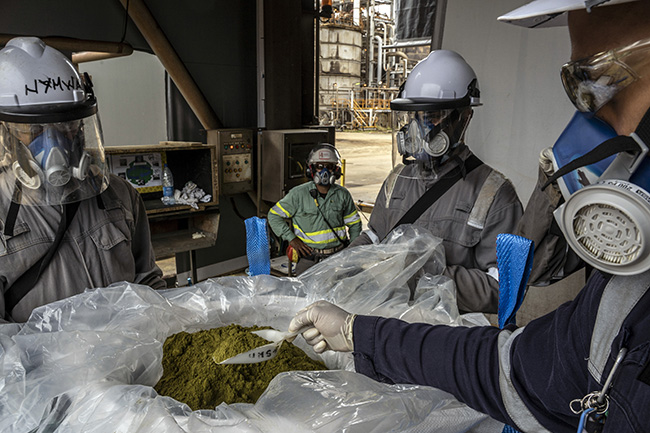
A Place in the Pacific
Goro’s earth is rich in nickel and cobalt, key ingredients in the lithium-ion batteries most commonly used for electric vehicles. To extract the useful minerals takes a lot of energy. That means a lot of hazardous emissions.
First, giant excavators, loaders and trucks running on fossil fuels scoop up the earth and trundle it away. Then the soil slurry is fed into a coal-fired facility that uses high-pressure blasts of sulfuric acid at high temperature to extract nickel and cobalt.
Prony Resources is promising to halve its carbon emissions by 2030 and become carbon neutral 10 years after that. Waste from the plant, which is currently held in a tailings dam as a toxic sludge, will be filtered and transformed into a less corrosive dry waste, using a new system with $420 million in investment.
The dirty coal that powers the processing plant will be replaced by a large collection of solar panels, say Prony executives.
There is another stumbling block in efforts to streamline the battery-making process. Most of the nickel destined for electric vehicle batteries, Goro’s included, goes to one place: China.
After more than a decade of state encouragement, China dominates battery making. For now, no Western carmaker — not Tesla, Ford or Volkswagen — can charge all its electric cars without Beijing. Europe controls less than 5% of the process, according to Trafigura. The United States is barely a player.
Tesla has plans to produce batteries in Texas and Germany and General Motors in Ohio, which would help avoid an overreliance on China. By securing nickel in places like New Caledonia or Australia, then sending the mineral directly to its own battery-making facilities, Tesla would be able to reduce its shipping carbon footprint.

This article originally appeared in The New York Times. Eric Lipton contributed reporting.
c.2021 The New York Times Company


